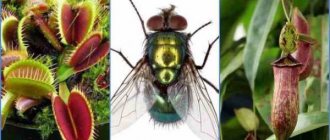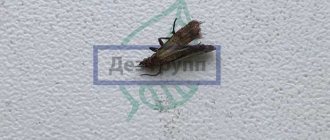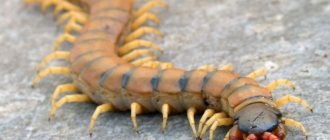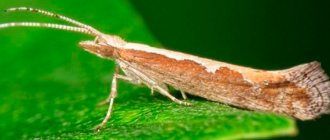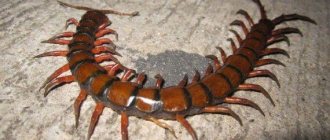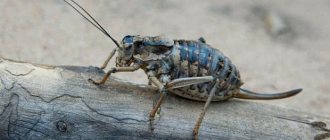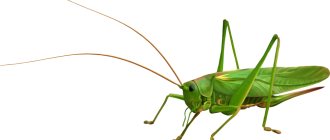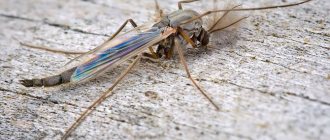Mega grasshoppers
During the day, these insects usually hide in the foliage, under the hanging long branches of ferns, palms or other trees. And at night they leave their homes in search of food and new shelter. They usually move through trees or on the ground.
Adults do not live long, during which time they mate several times and leave offspring. Females lay many eggs at once in the soft forest soil, from which new mega-grasshoppers soon hatch.
Fact! This subspecies was originally widespread in Northland, Auckland and Big Barrier Island. But destruction of the natural habitat and exotic predators led to the extinction of the Hueta grasshoppers. Fortunately (or unfortunately), the population has survived on Little Barrier. Biologists also regularly resettle artificially bred individuals on other islands of New Zealand.
Giant grasshopper from New Zealand
For the first time, seeing a huge grasshopper, feeling completely free and at ease in its usual habitats, can really be horrified. What gives the insect a terrifying appearance are its strong mandibles, which representatives of the species are not averse to “butting” with, as beetles dressed in similar “ammunition” sometimes do.
Ueta are mostly nocturnal insects that develop vigorous activity when dusk falls on the ground. The world's largest grasshoppers feed on plant fruits, leaves, flowers, lichen, small insects and frogs.
Giant brown grasshoppers do not have wings, but this does not prevent them from using powerful hind legs covered with sharp spines, which become real weapons in times of danger or hunting. To protect itself from enemy attacks, the grasshopper effectively throws its legs forward, trying to wound the opponent as painfully as possible. Needless to say, what tough fights between males occur when the mating season begins.
Sexual maturity of individuals occurs at one and a half years. It is then that the female grasshopper becomes capable of bearing offspring. Out of 400 eggs, no more than a third of grasshoppers are born. In this case, the female who gave birth to new individuals dies.
The fight for the survival of the species
Now these huge grasshoppers are in danger of extinction, so biologists are doing everything possible to prevent this. For example, staff at the Butterfly Creek Project in South Auckland successfully conducted a Weta breeding experiment. No one had ever tried to breed these insects in captivity on such a scale, but immediately after their success, many enthusiasts followed suit.
The project started in 2010. 18 adult Weta were taken from Little Barrier Island, and then, after artificial selection, 25 new grasshoppers were “evicted” to the Tiritiri Matangi Nature Reserve Island. And the same amount - to another “pure” island-reserve Motuora.
In 2012, the Auckland Nature Reserve joined the species conservation project. His staff collected 12 grasshoppers from Little Barrier Island to house and hatch at the sanctuary.
Within a year, more than a hundred Ueta cubs were hatched in the reserve; they were placed in specially built enclosures. And they even had to hire additional staff to help grow and breed the increasing population.
There were so many of them that there were no longer enough separate enclosures. Therefore, the entomogs slightly changed the breeding program and began raising Weta in groups in large cages. Both methods have shown their success.
Weta: a giant grasshopper the size of a rat
The well-known grasshopper has never looked so terrifying in our eyes. Meet the giant weta. At first glance, it seems that we are looking at this insect through a magnifying glass. But in fact, such impressive sizes are quite real!
Source: yandex.ru
What a blessing that you can meet this creature only in one place on our planet - on Little Barrier Island in New Zealand. Once upon a time, local residents, when they first encountered it on their land, called the unusual insect “the god of ugly creatures.” Well, it should be noted that they hit the nail on the head.
Source: yandex.ru
If we look at the list of the Top 10 heaviest and largest insects in the world, we will see our new friend there. The body length of the weta reaches 10 cm, excluding the legs, which grow up to 4 cm, and the weight fluctuates around 30 g.
Source: yandex.ru
The giant belongs to the orthoptera creatures, but it does not have wings, therefore, wetes cannot fly. Jump too. They are only able to slowly move along the surface of the earth. The thugs' weapons are their hind legs. They are covered with thorns; in a moment of danger or hunting, the insect hits the enemy with all its might, causing him to lose his vigilance and become easy prey.
Source: yandex.ru
During the day, wetes sleep in their burrows, located mainly in trees. Sometimes their houses are found among rocks and stones. The main activity occurs at night. The diet consists of both leaves and small arthropods.
Source: yandex.ru
Insects are of great importance for the ecology of New Zealand, since on their legs and inside their bodies they carry the seeds of many plants from place to place, distributing them throughout the territory.
Before becoming capable of reproduction, the female must reach sexual maturity, which occurs at about one and a half years. After this, she lays up to 200 eggs in a secluded place and soon dies. The larvae appear after 3-5 months, depending on the situation around them, but only a few remain alive, all the rest become tasty prey for small animals.
Source: yandex.ru
Another interesting feature of the weta is the ability to calmly endure severe cold, even when frozen in an ice floe. After defrosting, all vital functions remain intact. True, recently the population of giants has decreased significantly, which is associated with the active development of new lands by humans. Therefore, protecting the species from extinction is carried out not only at the state, but also at the international level.
1111
Amazing facts
Female Weta grasshoppers are heavier and larger than males. On average, the weight of females can reach up to 35 grams. This is even more than the average sparrow weighs!
Puberty in both females and males occurs at approximately 14-24 months. They begin to mate 1-2 months after maturity. During one mating, the female lays 10-300 eggs.
The subspecies' favorite diet is fresh leaves from local plants. For example, they love to eat the foliage of karaka, karama, mamanga, masho and koekohe. Until the moment of “coming of age,” each grasshopper goes through 11 periods of maturation. This means that he loses his external exoskeleton 11 times and acquires a new one.
Giant Weta
This insect is not called the giant weta for nothing. The size of an adult individual can be the size of a sparrow, and its weight can reach 85 grams. The weta is endemic to New Zealand. This is a typical representative of the family Anostostomatidae and Rhaphidophoridae, which contains about a hundred species of these insects. Veta has well-defined sexual dimorphism. Females are much larger than males. We have already said that individual females can weigh more than 80 grams. However, the average weight of an insect rarely exceeds 43 grams. Only pregnant females, who have eggs in their abdomen, can weigh more. In normal condition, their weight does not exceed 19 grams.
The weta is a wingless nocturnal insect. She uses a rather original method to protect herself from predators. By putting its hind limbs forward, the insect tries to acquire a menacing appearance and, thereby, scare away the attacker. If this does not work, the weta falls on its back and pretends to be dead. Sometimes this technique helps.
With the onset of mating season, the male weta goes in search of a female. To find a girlfriend, he is able to cover a distance of 15 kilometers in just one night. As for the female, she is in no hurry and patiently waits for her gentleman.
Until recently, the population of these insects was constantly decreasing. This is due to the uncontrolled activities of people who invaded the territory of their natural habitat. Deforestation, plowing of land for crops - all this had a negative impact on insects. Today the situation has stabilized, and the giant weta is thriving on the islands closest to the mainland. Nothing threatens her here.
The local population uses these insects for entertainment purposes, organizing competitions between them, similar to the stag beetle competition. In the fight for the female, the males begin to butt heads with their powerful mandibles, which leads people to wild delight. To participate in the competition, males of the species Deinacrida rugosa are selected, which reach a length of seven centimeters and a weight of 70 grams.
These insects reach sexual maturity at the age of one and a half years. The female lays up to 200 eggs, after which she dies.
The diet consists of insects, flowers, fruits, green leaves.
Scientists agree that the gigantic size of these insects is due to the absence of small-sized mammals in their habitat. The giant weta simply occupied this empty niche.
Origin of the largest grasshoppers
Weta are grasshoppers that appeared on the territory of modern New Zealand many centuries ago. At that time, this area of land was not yet surrounded by an archipelago. It turned out that in these territories for a long time there was not a single small mammal, which are the natural enemies of grasshoppers, so nothing prevented Ueta from actively evolving.
OLYMPUS DIGITAL CAMERA
The largest grasshopper can, without exaggeration, be called a universal animal. It costs them nothing to adapt to a wide variety of living conditions. Hueta travel great distances every day. Today they can be found throughout the New Zealand archipelago, but the coastal zones remain the favorite place for this species.
Wheta play a huge role in the New Zealand ecosystem. On their bodies they carry seeds of a wide variety of plants, thereby helping to enrich the nature of the region.
Today, the largest grasshoppers are on the brink of survival. In just a few decades, the weta could easily become an endangered insect species. Small and larger mammals brought to these places by humans pose a serious threat to the population of the largest grasshoppers, which are simply not able to withstand such rivals. The active extermination of weta by birds of prey, rats, and cats can have the most dire consequences. Ecologists are seriously concerned that the situation so far is not in favor of giant insects.

